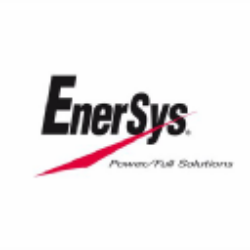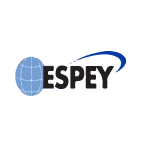NVT

nVent Electric plc
NVT
(2.8)72,40 USD
26.75% ROA
17.82% ROE
20.36x PER
11.744.751.900,00 USD
54.56% DER
1.05% Yield
16.95% NPM
nVent Electric plc Stock Analysis
nVent Electric plc Fundamental Analysis
Fundamental analysis in stock investing is like studying the foundation of a house before buying it. It involves looking at a company's financial health, like its earnings, assets, and debts, to determine if it's a good investment based on its fundamental strength and potential for growth.
| # | Analysis | Rating |
|---|---|---|
| 1 |
ROE
ROE surpassing expectations (16.61%) highlights strong profitability and efficient use of shareholders' equity, making it an appealing investment prospect. |
|
| 2 |
ROA
The stock's ability to make a lot of money from its assets shows that it is very profitable, making it a good choice for people who want to invest and make a lot of money. |
|
| 3 |
Dividend
Investors can take comfort in the company's unwavering commitment to dividends, as it has consistently distributed payouts over the past five years, ensuring a reliable income stream. |
|
| 4 |
PBV
The stock's PBV ratio (2.99x) indicates a justifiable valuation, presenting a compelling choice for investors seeking reasonable returns. |
|
| 5 |
DER
The stock maintains a fair debt to equity ratio (63%), indicating a reasonable balance between the money it owes and the ownership it possesses. |
|
| 6 |
Revenue Growth
This company's revenue has shown remarkable growth over the past three years, making it an excellent choice for seeking a consistently prosperous investment. |
|
| 7 |
Net Profit Growth
Over the last three years, this company has consistently achieved net profit growth, indicating a favorable financial performance and making it an attractive investment option. |
|
| 8 |
Assets Growth
With a track record of continuous revenue growth in the last three years, this company offers a promising investment opportunity |
|
| 9 |
Graham Number
The Graham number of this company suggests that its stock price may be overvalued, indicating a less favorable investment opportunity. |
|
| 10 |
Dividend Growth
Potential investors should be aware that the company's dividend growth has shown no upward trend in the past three years, indicating limited potential for increased returns. |
|
| 11 |
Buffet Intrinsic Value
The company's stock appears overvalued (-310) by Warren Buffett's formula, suggesting a less favorable investment opportunity as its market price exceeds its estimated intrinsic value. |
nVent Electric plc Technical Analysis
Technical analysis in stock investing is like reading the patterns on a weather map to predict future weather conditions. It involves studying past stock price movements and trading volumes to make predictions about where a stock's price might go next, without necessarily looking at the company's financial health.
| # | Analysis | Recommendation |
|---|---|---|
| 1 | Awesome Oscillator | Buy |
| 2 | MACD | Buy |
| 3 | RSI | Hold |
| 4 | Stoch RSI | Sell |
nVent Electric plc Price Chart
Financial Statements
Financial statements are like report cards for companies. They show how much money a company makes (income statement), what it owns and owes (balance sheet), and where it spends its money (cash flow statement), helping stock investors understand if a company is healthy and worth investing in.
Income Statements
An income statement for a company is like a scoreboard for its profits and losses. It shows how much money the company made (revenue) and how much it spent to make that money (expenses), helping stock investors see if a company is making a profit or not.
Revenue in stock investing is the total amount of money a company earns from its sales, and it's a key factor that investors consider to assess a company's financial performance and growth potential.
| Year | Revenue | Growth |
|---|---|---|
| 2015 | 1.809.300.000 | |
| 2016 | 2.116.000.000 | 14.49% |
| 2017 | 2.097.900.000 | -0.86% |
| 2018 | 2.213.600.000 | 5.23% |
| 2019 | 2.204.000.000 | -0.44% |
| 2020 | 1.998.600.000 | -10.28% |
| 2021 | 2.462.000.000 | 18.82% |
| 2022 | 2.909.000.000 | 15.37% |
| 2023 | 3.435.200.000 | 15.32% |
| 2023 | 3.263.600.000 | -5.26% |
| 2024 | 3.521.200.000 | 7.32% |
Research and Development Expenses are the costs a company incurs to create and improve its products or services, which can be important for investors to evaluate a company's innovation and potential for future growth.
| Year | Research and Development Expenses | Growth |
|---|---|---|
| 2015 | 29.300.000 | |
| 2016 | 40.600.000 | 27.83% |
| 2017 | 42.500.000 | 4.47% |
| 2018 | 45.600.000 | 6.8% |
| 2019 | 48.200.000 | 5.39% |
| 2020 | 43.500.000 | -10.8% |
| 2021 | 48.600.000 | 10.49% |
| 2022 | 60.400.000 | 19.54% |
| 2023 | 73.200.000 | 17.49% |
| 2023 | 71.500.000 | -2.38% |
| 2024 | 83.600.000 | 14.47% |
General and Administrative Expenses are the costs a company incurs to run its day-to-day operations, such as office rent, salaries, and utilities, which investors consider to understand a company's overall efficiency and management effectiveness.
| Year | General and Administrative Expenses | Growth |
|---|---|---|
| 2015 | 0 | |
| 2016 | 0 | 0% |
| 2017 | 485.900.000 | 100% |
| 2018 | 519.700.000 | 6.5% |
| 2019 | 0 | 0% |
| 2020 | 0 | 0% |
| 2021 | 0 | 0% |
| 2022 | 0 | 0% |
| 2023 | 0 | 0% |
| 2023 | 0 | 0% |
| 2024 | 0 | 0% |
EBITDA stands for Earnings Before Interest, Taxes, Depreciation, and Amortization. It is a measure that helps stock investors analyze a company's profitability by looking at its earnings without considering certain expenses. This helps to get a clearer picture of the company's financial performance and its ability to generate cash flow.
| Year | EBITDA | Growth |
|---|---|---|
| 2015 | 329.900.000 | |
| 2016 | 442.800.000 | 25.5% |
| 2017 | 411.400.000 | -7.63% |
| 2018 | 397.000.000 | -3.63% |
| 2019 | 398.900.000 | 0.48% |
| 2020 | 370.900.000 | -7.55% |
| 2021 | 484.600.000 | 23.46% |
| 2022 | 618.000.000 | 21.59% |
| 2023 | 774.000.000 | 20.16% |
| 2023 | 720.300.000 | -7.46% |
| 2024 | 833.600.000 | 13.59% |
Gross profit is the money a company makes from selling its products or services after subtracting the cost of producing or providing them, and it is an important measure for investors to understand a company's profitability.
| Year | Gross Profit | Growth |
|---|---|---|
| 2015 | 670.100.000 | |
| 2016 | 835.800.000 | 19.83% |
| 2017 | 841.900.000 | 0.72% |
| 2018 | 876.100.000 | 3.9% |
| 2019 | 865.800.000 | -1.19% |
| 2020 | 749.400.000 | -15.53% |
| 2021 | 941.900.000 | 20.44% |
| 2022 | 1.096.700.000 | 14.12% |
| 2023 | 1.412.800.000 | 22.37% |
| 2023 | 1.342.100.000 | -5.27% |
| 2024 | 1.473.200.000 | 8.9% |
Net income in stock investing is like the money a company actually gets to keep as profit after paying all its bills, and it's an important measure to understand how well a company is doing financially.
| Year | Net Profit | Growth |
|---|---|---|
| 2015 | 210.100.000 | |
| 2016 | 259.100.000 | 18.91% |
| 2017 | 361.700.000 | 28.37% |
| 2018 | 230.800.000 | -56.72% |
| 2019 | 222.700.000 | -3.64% |
| 2020 | -47.200.000 | 571.82% |
| 2021 | 272.900.000 | 117.3% |
| 2022 | 399.800.000 | 31.74% |
| 2023 | 422.000.000 | 5.26% |
| 2023 | 567.100.000 | 25.59% |
| 2024 | 444.000.000 | -27.73% |
EPS, or earnings per share, is a measure that shows how much profit a company has earned for each outstanding share of its stock, and it is important for stock investors as it helps understand the profitability of a company and compare it with other companies in the market.
| Year | Earning per Share (EPS) | Growth |
|---|---|---|
| 2015 | 1 | |
| 2016 | 1 | 0% |
| 2017 | 2 | 50% |
| 2018 | 1 | -100% |
| 2019 | 1 | 0% |
| 2020 | 0 | 0% |
| 2021 | 2 | 100% |
| 2022 | 2 | 50% |
| 2023 | 3 | 0% |
| 2023 | 3 | 33.33% |
| 2024 | 3 | -50% |
Cashflow Statements
Cashflow statements show the movement of money in and out of a company, helping stock investors understand how much money a company makes and spends. By examining cashflow statements, investors can assess if a company is generating enough cash to pay its bills, invest in growth, and provide returns to stockholders.
Free cash flow is the leftover cash that a company generates after covering its operating expenses and capital expenditures, which is important for stock investors as it shows how much money a company has available to invest in growth, pay dividends, or reduce debt.
| Year | Free Cashflow | Growth |
|---|---|---|
| 2015 | 296.500.000 | |
| 2016 | 289.500.000 | -2.42% |
| 2017 | 377.900.000 | 23.39% |
| 2018 | 304.000.000 | -24.31% |
| 2019 | 297.500.000 | -2.18% |
| 2020 | 304.000.000 | 2.14% |
| 2021 | 333.800.000 | 8.93% |
| 2022 | 348.700.000 | 4.27% |
| 2023 | 457.100.000 | 23.71% |
| 2023 | 128.400.000 | -256% |
| 2024 | 109.600.000 | -17.15% |
Operating cash flow represents the cash generated or consumed by a company's day-to-day operations, excluding external investing or financing activities, and is crucial for stock investors as it shows how much cash a company is generating from its core business operations.
| Year | Operating Cashflow | Growth |
|---|---|---|
| 2015 | 343.900.000 | |
| 2016 | 364.000.000 | 5.52% |
| 2017 | 409.700.000 | 11.15% |
| 2018 | 343.500.000 | -19.27% |
| 2019 | 336.300.000 | -2.14% |
| 2020 | 344.000.000 | 2.24% |
| 2021 | 373.300.000 | 7.85% |
| 2022 | 394.600.000 | 5.4% |
| 2023 | 528.100.000 | 25.28% |
| 2023 | 145.000.000 | -264.21% |
| 2024 | 128.100.000 | -13.19% |
Capex, short for capital expenditures, refers to the money a company spends on acquiring or upgrading tangible assets like buildings, equipment, or technology, which is important for stock investors as it indicates how much a company is investing in its infrastructure to support future growth and profitability.
| Year | Capital Expenditure | Growth |
|---|---|---|
| 2015 | 47.400.000 | |
| 2016 | 74.500.000 | 36.38% |
| 2017 | 31.800.000 | -134.28% |
| 2018 | 39.500.000 | 19.49% |
| 2019 | 38.800.000 | -1.8% |
| 2020 | 40.000.000 | 3% |
| 2021 | 39.500.000 | -1.27% |
| 2022 | 45.900.000 | 13.94% |
| 2023 | 71.000.000 | 35.35% |
| 2023 | 16.600.000 | -327.71% |
| 2024 | 18.500.000 | 10.27% |
Balance Sheet
Balance sheets provide a snapshot of a company's financial health and its assets (such as cash, inventory, and property) and liabilities (like debts and obligations) at a specific point in time. For stock investors, balance sheets help assess the company's overall worth and evaluate its ability to meet financial obligations and support future growth.
Equity refers to the ownership interest or stake that shareholders have in a company, representing their claim on its assets and earnings after all debts and liabilities are paid.
| Year | Equity | Growth |
|---|---|---|
| 2015 | 3.506.700.000 | |
| 2016 | 3.485.700.000 | -0.6% |
| 2017 | 3.791.300.000 | 8.06% |
| 2018 | 2.687.100.000 | -41.09% |
| 2019 | 2.592.500.000 | -3.65% |
| 2020 | 2.409.800.000 | -7.58% |
| 2021 | 2.496.100.000 | 3.46% |
| 2022 | 2.731.700.000 | 8.62% |
| 2023 | 2.945.100.000 | 7.25% |
| 2023 | 3.142.100.000 | 6.27% |
| 2024 | 3.287.800.000 | 4.43% |
Assets represent the valuable resources that a company owns, such as cash, inventory, property, and equipment, and understanding a company's assets helps investors assess its value and potential for generating future profits.
| Year | Assets | Growth |
|---|---|---|
| 2015 | 4.564.400.000 | |
| 2016 | 4.493.800.000 | -1.57% |
| 2017 | 4.725.000.000 | 4.89% |
| 2018 | 4.552.700.000 | -3.78% |
| 2019 | 4.640.300.000 | 1.89% |
| 2020 | 4.366.100.000 | -6.28% |
| 2021 | 4.674.200.000 | 6.59% |
| 2022 | 4.902.200.000 | 4.65% |
| 2023 | 5.925.700.000 | 17.27% |
| 2023 | 6.161.700.000 | 3.83% |
| 2024 | 6.188.100.000 | 0.43% |
Liabilities refer to the financial obligations or debts that a company owes to creditors or external parties, and understanding a company's liabilities is important for investors as it helps assess the company's financial risk and ability to meet its obligations.
| Year | Liabilities | Growth |
|---|---|---|
| 2015 | 1.057.700.000 | |
| 2016 | 1.008.100.000 | -4.92% |
| 2017 | 933.700.000 | -7.97% |
| 2018 | 1.865.600.000 | 49.95% |
| 2019 | 2.047.800.000 | 8.9% |
| 2020 | 1.956.300.000 | -4.68% |
| 2021 | 2.178.100.000 | 10.18% |
| 2022 | 2.170.500.000 | -0.35% |
| 2023 | 2.980.600.000 | 27.18% |
| 2023 | 3.019.600.000 | 1.29% |
| 2024 | 2.900.300.000 | -4.11% |
nVent Electric plc Financial Ratio (TTM)
Valuation Metrics
- Revenue per Share
- 20.92
- Net Income per Share
- 3.47
- Price to Earning Ratio
- 20.36x
- Price To Sales Ratio
- 3.38x
- POCF Ratio
- 19.57
- PFCF Ratio
- 22.32
- Price to Book Ratio
- 3.57
- EV to Sales
- 3.84
- EV Over EBITDA
- 16.35
- EV to Operating CashFlow
- 22.28
- EV to FreeCashFlow
- 25.39
- Earnings Yield
- 0.05
- FreeCashFlow Yield
- 0.04
- Market Cap
- 11,74 Bil.
- Enterprise Value
- 13,36 Bil.
- Graham Number
- 39.32
- Graham NetNet
- -11.69
Income Statement Metrics
- Net Income per Share
- 3.47
- Income Quality
- 1.04
- ROE
- 0.18
- Return On Assets
- 0.08
- Return On Capital Employed
- 0.1
- Net Income per EBT
- 1.15
- EBT Per Ebit
- 0.79
- Ebit per Revenue
- 0.19
- Effective Tax Rate
- -0.1
Margins
- Sales, General, & Administrative to Revenue
- 0
- Research & Developement to Revenue
- 0.02
- Stock Based Compensation to Revenue
- 0.01
- Gross Profit Margin
- 0.41
- Operating Profit Margin
- 0.19
- Pretax Profit Margin
- 0.15
- Net Profit Margin
- 0.17
Dividends
- Dividend Yield
- 0.01
- Dividend Yield %
- 1.05
- Payout Ratio
- 0.21
- Dividend Per Share
- 0.75
Operating Metrics
- Operating Cashflow per Share
- 3.61
- Free CashFlow per Share
- 3.17
- Capex to Operating CashFlow
- 0.12
- Capex to Revenue
- 0.02
- Capex to Depreciation
- 0.47
- Return on Invested Capital
- 0.14
- Return on Tangible Assets
- 0.27
- Days Sales Outstanding
- 64.62
- Days Payables Outstanding
- 47.52
- Days of Inventory on Hand
- 79.6
- Receivables Turnover
- 5.65
- Payables Turnover
- 7.68
- Inventory Turnover
- 4.59
- Capex per Share
- 0.44
Balance Sheet
- Cash per Share
- 1,65
- Book Value per Share
- 19,79
- Tangible Book Value per Share
- -4.49
- Shareholders Equity per Share
- 19.79
- Interest Debt per Share
- 11.38
- Debt to Equity
- 0.55
- Debt to Assets
- 0.29
- Net Debt to EBITDA
- 1.98
- Current Ratio
- 2.18
- Tangible Asset Value
- -0,75 Bil.
- Net Current Asset Value
- -1,48 Bil.
- Invested Capital
- 5304600000
- Working Capital
- 0,77 Bil.
- Intangibles to Total Assets
- 0.65
- Average Receivables
- 0,63 Bil.
- Average Payables
- 0,26 Bil.
- Average Inventory
- 443450000
- Debt to Market Cap
- 0.15
Dividends
Dividends in stock investing are like rewards that companies give to their shareholders. They are a portion of the company's profits distributed to investors, typically in the form of cash payments, as a way for them to share in the company's success.
| Year | Dividends | Growth |
|---|---|---|
| 2018 | 0 | |
| 2019 | 1 | 0% |
| 2020 | 1 | 0% |
| 2021 | 1 | 0% |
| 2022 | 1 | 0% |
| 2023 | 1 | 0% |
| 2024 | 1 | 0% |
nVent Electric plc Profile
About nVent Electric plc
nVent Electric plc designs, manufactures, markets, installs, and services electrical connection and protection products worldwide. The company operates through three segments: Enclosures, Electrical & Fastening Solutions, and Thermal Management. The Enclosures segment provides solutions to connect and protect critical electronics, communication, control, and power equipment; physical infrastructure solutions to host, connect, and protect server and network equipment; and indoor and outdoor protection for test and measurement and aerospace and defense applications in industrial, infrastructure, commercial, and energy verticals. Its products also include metallic and non-metallic enclosures, cabinets, sub racks, and backplanes. The Electrical & Fastening Solutions segment offers fastening solutions to connect and protect electrical and mechanical systems, and civil structures. It also provides engineered electrical and fastening products. The Thermal Management segment offers electric thermal solutions that connect and protect buildings, infrastructure, industrial processes, and people. This segment provides thermal management systems comprising heat tracing, floor heating, fire-rated and specialty wiring, sensing, and snow melting and de-icing solutions. The company sells its products under the CADDY, ERICO, HOFFMAN, RAYCHEM, SCHROFF, and TRACER brands. nVent Electric plc markets its products through electrical distributors, data center contractors, original equipment manufacturers, and maintenance contractors. It serves the energy, industrial, infrastructure, and commercial and residential sectors. The company was founded in 1903 and is based in London, the United Kingdom.
- CEO
- Ms. Beth A. Wozniak
- Employee
- 11.300
- Address
-
The Mille
London, TW8 9DW
nVent Electric plc Executives & BODs
| # | Name | Age |
|---|---|---|
| 1 |
Ms. Beth A. Wozniak Chief Executive Officer & Chairman of the Board |
70 |
| 2 |
Ms. Sara E. Zawoyski Executive Vice President, Interim President of Enclosures & Chief Financial Officer |
70 |
| 3 |
Mr. Tony Riter Vice President of Investor Relations |
70 |
| 4 |
Mr. Robert J. Van Der Kolk President of Electrical & Fastening Solutions |
70 |
| 5 |
Mr. Randolph A. Wacker Senior Vice President, Chief Accounting Officer & Treasurer |
70 |
| 6 |
Mr. Michael Brad Faulconer President of Thermal Management |
70 |
| 7 |
Mr. Aravind Padmanabhan Ph.D. Executive Vice President & Chief Technology Officer |
70 |
| 8 |
Ms. Martha Claire Bennett Executive Vice President & Chief Marketing Officer |
70 |
| 9 |
Mr. Jon D. Lammers J.D. Executive Vice President, General Counsel & Secretary |
70 |
| 10 |
Ms. Lynnette R. Heath Executive Vice President & Chief HR Officer |
70 |










